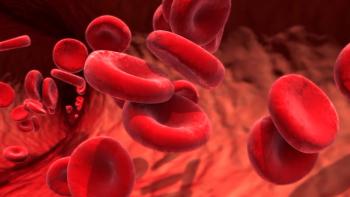
Are common chemicals associated with earlier onset of menopause?
A study of a representative sample of US women shows a clinically significant association between early menopause and exposure to 15 different endocrine-disrupting chemicals.
A
Researchers at the Washington University School of Medicine in St. Louis, Missouri used data on 31,575 women from the National Health and Nutrition Examination Survey (NHANES) spanning 1999 to 2009 to assess whether EDC exposure was associated with earlier age of menopause. Serum levels of 111 individual dioxins, phytoestrogens, phthalates, polychlorinated biphenyls, phenolic derivatives, organophosphate
Eligible women were not currently pregnant, breastfeeding, using
Researchers found that the mean age of menopause was 1.9 to 3.8 years earlier in women who had high levels of β-hexachlorocyclohexane, mirex, p,p’-DDE, 1,2,3,4,6,7,8-heptachlorodibenzofuran, mono-(2-ethyl-5-hydroxyhexyl) and mono-(2-ethyl-5-oxohexyl) phthalate, polychlorinated biphenyl congeners −70, −99, −105, −118, −138, −153, −156, −170, and −183 than in those with less exposure. In addition, women exposed to EDC were up to 6 times more likely to be menopausal than were non-exposed women.
The authors noted that their study had some limitations. The date of LMP was self-reported by the women, the time between onset of menopause and measurement of EDC levels was considerable, data on EDC exposures were not available for all eligible menopausal women, and it was not possible to establish causality because the NHANES data are cross-sectional. The researchers also noted that they studied each EDC individually and humans may be exposed to multiple EDCs at any given time.
The investigators concluded that their study indicates an association between earlier age at the start of
To get weekly advice for today's Ob/Gyn,
Newsletter
Get the latest clinical updates, case studies, and expert commentary in obstetric and gynecologic care. Sign up now to stay informed.










